Compare Credit Cards - Australia
Savrr.com is a trading name of SAVRR Australia Pty Ltd. Comparison is powered by SAVRR Australia Pty Ltd who don’t compare all providers in the market, or all products of those compared. SAVRR Australia does not provide credit assistance or advice and may receive a fee if you click on, apply, or are approved, for a product.
Learn More
- Default
- Longest Purchase Period
- Lowest Cash Advance Rate
- Longest Balance Transfer Period
Savrr.com is a trading name of SAVRR Pty Ltd. SAVRR compares loan products from a range of banks and other financial or credit product providers and does not compare all products in the market or all product features. To filter the results, you will need to enter some basic information which will generate a comparison of products that fall within those parameters. The default ordering of products is based on the Longest Purchase Period. SAVRR do not take into account your objectives, financial situation or needs, or provide advice, assistance, or recommendations.

Credit Union SA - Education Community Credit Card
Purchase Rate
Interest Free Period
Balance Transfer
Annual Fee

Credit Union SA - Workplace Benefits Credit Card
Purchase Rate
Interest Free Period
Balance Transfer
Annual Fee
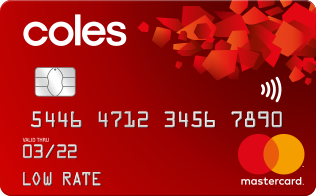
Coles - Low Rate Mastercard
Purchase Rate
Interest Free Period
Balance Transfer
5% BT fee applies.
Annual Fee

Bankwest - Zero Platinum Mastercard
Purchase Rate
Interest Free Period
Balance Transfer
3% BT fee applies.
Annual Fee
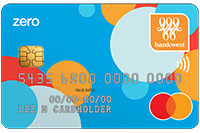
Bankwest - Zero Classic Mastercard
Purchase Rate
Interest Free Period
Balance Transfer
3% BT fee applies.
Annual Fee
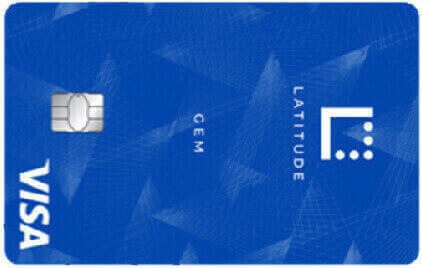
Latitude Financial Services - Gem Visa Credit Card
Purchase Rate
Interest Free Period
Annual Fee

Defence Bank - Foundation Credit Card
Purchase Rate
Interest Free Period
Balance Transfer
Annual Fee
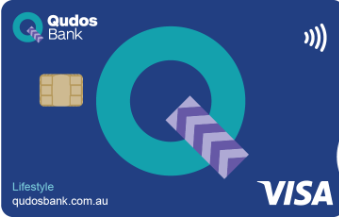
Qudos Bank - Lifestyle Credit Card
Purchase Rate
Balance Transfer
Annual Fee
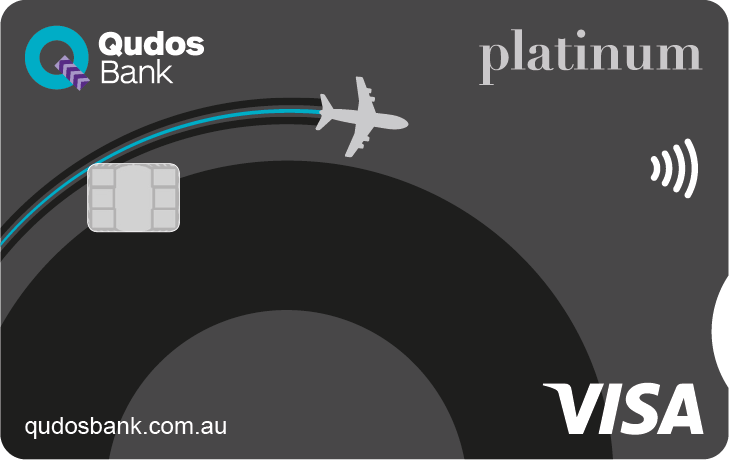
Qudos Bank - Visa Platinum Credit Card
Purchase Rate
Interest Free Period
Balance Transfer
Annual Fee

BankVic - Low Rate Visa Credit card
Purchase Rate
Interest Free Period
Balance Transfer
Annual Fee
Credit Cards Guide
Ads for credit cards inundate social media, TV, billboard ads and more. And you may have seen your fair share of offers from banks and lenders with an ‘amazing’ credit card. But how do you sift through all the jargon and compare credit card options to figure out which is the best for you?
While there’s no ‘best’ credit card, we’ve put together this easy-to-understand guide — which is jam-packed with helpful information — so you’ll be able to confidently compare a range of credit cards to help choose a suitable option for your needs.
What is a credit card?
Before we dive into some more complex aspects of credit cards, let’s break down exactly what a credit card actually is. It looks, and appears to function, much like a debit card — it’s a small, plastic card, issued by any number of banks and lenders, that allows you to buy products and services without having to pay with physical cash.
However, while a debit card allows you to spend money stored in a bank account, a credit card allows you to use money you don’t actually possess. This is often called a line of credit. When you use a credit card, you’re taking out a loan from your bank or other kind of lender.

How do credit cards work?
When you get a credit card, you’ll be given approval to use a certain amount of credit. That amount is called your credit limit because you can use as much credit as you choose up to your approved amount.
As an example, let’s say a credit card provider approved you for a $2000 line of credit. That would mean the provider would be giving you permission to borrow and spend up to $2000 using that card. So your credit limit would be $2000. You would have the option of spending as much, or as little, of that $2000 as you like. Once you’ve spent $2000, you’d have to pay back some of that borrowed money — that credit — before you could buy anything else using the card.
Imagine a bucket filled with 2000 L of water. Every time you take a drink from the bucket, the volume of water decreases. When the bucket is empty, you can’t drink any more water, no matter how thirsty you are. But if you refill the bucket, you can start drinking from it again.
It’s the same with a credit card. Repaying spent credit refills your credit allowance, so you can borrow funds again when you need to. For that reason, the line of credit you get when your credit card application is approved is called a ‘revolving line of credit’.
Except under specific circumstances, whenever you buy something using a credit card, you don’t just have to pay back what you borrowed. You also have to pay an extra amount as a fee for being allowed to borrow funds. That fee is called interest. Depending on the type of credit card you have and the purchase you make, you’ll generally either:
- Be charged interest from the moment you make a purchase; or
- Have until a particular due date to repay the borrowed funds and will only be charged interest if you don’t repay the full amount by that date.
As an example, let’s say you spent $100 using your credit card on July 1 and your interest rate is 12 per cent per annum (per year). If you didn’t repay the amount for a whole year (that’s the ‘per annum’ bit), you’d have to pay 12 per cent of $100, which is $12. But your interest due is calculated daily on the amount you owe (so the $100 plus the interest you accrued from previous days). So, if you choose to repay the amount you owed in full, including the interest, on July 31, you’d have to pay roughly $101.
Having said that, many banks and lenders that provide credit cards may offer an interest-free period. The interest-free period is like a grace period during which you won’t accrue any interest. In our example, if your credit card provider granted you an interest-free period of 31 days starting from July 1, you wouldn’t have to start paying interest until August 1.
The important thing to note about interest-free periods is that they’re the maximum number of days you won’t be charged interest for. So, if you spent the $100 on July 27, you’d still need to repay the amount by the end of July 31 if you wanted to avoid paying interest. Many credit card interest-free periods are 44 or 55 days. Your credit card statement will specify when your interest-free period starts and ends.
Also, some types of transactions aren’t eligible for the interest-free grace period.
One other thing to be aware of — banks and lenders will require you to make at least a minimum repayment of your credit balance each month. This is usually whichever is larger between a small percentage (e.g. 2 per cent) of the total amount you owe or a fixed minimum (e.g. $25). If you don’t pay that minimum amount on time, they may charge a late payment fee, which will be charged on top of any interest you have to pay.
What are some of the different types of credit cards
As you’re probably beginning to appreciate, there are many variables when it comes to credit cards. These products can be a lucrative market for banks and lenders, so providers may offer all sorts of features in an effort to attract more customers. In fact, there are nine main types of credit card, each with unique features.
Balance-transfer credit cards
A balance transfer credit card lets you transfer the amount you owe (your balance) from another credit card onto a new card that has a low interest rate for a limited period of time. For people who’ve accidentally allowed their credit card debt to balloon and know they’ll have the means to pay their debt off in the near future, this can offer a convenient way to slow the increase in interest they owe. However, if such a person were to fail to repay their debt before the end of the introductory rate, they may end up paying even more interest.
If you think this kind of card might be a suitable option for your circumstances, take a look at our balance transfer credit card comparison.
Frequent flyer credit cards
Frequent flyer credit cards can be a good option for people who enjoy lots of plane travel. These cards are usually partnered with specific airlines, and whenever you make a purchase on a frequent flyer credit card, you’ll earn a certain amount of airline points.
Hypothetically, let’s say that one dollar corresponds with one airline point. This means, if you spend $500 on your frequent flyer credit card, you’ll get 500 airline points to spend on flights with that airline.
If you think this kind of card might be a suitable option for your circumstances, take a look at our frequent flyer credit card comparison.
Reward credit cards
Frequent flyer and cashback are types of reward credit cards because they reward you for spending credit. However, there are also reward credit cards that don’t fit within those categories. When you have just such a credit card, you’ll earn points whenever you buy products or services using your card. You’ll then be able to trade those points for products and services from the bank or lender’s reward program catalogue. (It’s much like a loyalty card from a supermarket, bookshop, pharmacy, or other similar business.)
If you think this kind of card might be a suitable option for your circumstances, take a look at our reward credit card comparison.
Bonus points credit cards
Bonus points credit cards are another kind of reward credit card. The difference with these cards is that you can earn a certain number of extra points if you spend the required amount of money within a specified period of time. For example, you might get 30,000 points if you spend $5000 within the first three months using this type of card. You can then redeem those points for all kinds of available products, services, or perks (which vary between specific cards). People who plan to spend a lot of money when they first get their card are often attracted to the offer of bonus points.
If you think this kind of credit card might be a suitable option for your circumstances, take a look at our rewards points credit card comparison.
No annual fee credit cards
Like the name implies, no annual fee credit cards don’t require you to pay a yearly fee in order to keep the card open. Some people who have a credit card in case of emergencies may choose one with no annual fee because they don’t like being charged extra money if they don’t use their card much or at all in a given year.
If you think this kind of card might be a suitable option for your circumstances, take a look at our no annual fee credit card comparison.
Low-interest credit cards
Low-interest credit cards, also called low-rate credit cards, charge a lower interest rate when you make a purchase with them. Some people who may not be able to pay back what they’ve borrowed quickly may prefer low-rate credit cards.
If you think this kind of credit card might be a suitable option for your circumstances, take a look at our low interest credit card comparison.
0% purchase credit cards
The name of this type of card can be a little confusing. This doesn’t mean you’ll never have to pay interest on the credit you use. Instead, 0% purchase cards come with an initial, extended interest-free period. For example, a 0% purchase card with an 18-month interest-free period will only start charging you interest if you don’t repay all the money you’ve borrowed within the first 18 months of having the card. And that initial interest-free period doesn’t repeat — after that first 18 months, you’ll be charged interest just like a normal credit card. This might be a good option for people who know it’ll be a while before they’ll be able to pay off a purchase.
If you think this kind of card might be a suitable option for your circumstances, take a look at our 0% purchase credit card comparison.
Black credit cards
Black credit cards are premium cards that generally offer incentives to use them. For instance, many grant more points, include airport lounge passes, come with a higher credit limit or deliver some other kind of appealing perk. Not just anyone will be approved for a black credit card, typically people with high credit scores and the ability to service a high limit may be eligible.
Not all lenders call their premium credit card ‘black’ and may use their own description. Importantly, these cards may have higher interest rates and fees which are important to weigh against the benefits offered.
Cashback credit cards
Cashback credit cards are similar to frequent flyer cards, but instead of earning airline points as a reward, you’ll receive money. As an example, let’s say you’ve got a card that provides 2 per cent cashback on every purchase. If you spend $1000 on your credit card, you’ll be awarded $20.
If you think this kind of card might be a suitable option for your circumstances, take a look at our cashback credit card comparison.
Business credit cards
Business credit cards are generally tailored for business use but are usually similar to a standard personal credit card. The key difference is often that a business credit card is not a ‘personal liability’ card. In general terms this means the business is responsible for the debt, not the individual. Some business credit cards come with features designed to appeal to businesses, and may include perks such as rewards or frequent flyer points.
Credit card payment networks
When you look at a credit card, you’ll notice it’ll have the logo of the bank or lender that provided it and a second logo, such as:
- Visa
- MasterCard
- American Express / Amex
- Diners Club
Those secondary logos represent the payment networks that support credit cards. These payment networks make it possible for retailers and other organisations to accept credit card payments. In exchange, they charge the seller a fee, which is why some sellers include a credit card surcharge in their fee structure.
Most Australian credit cards (92.7%, according to research company Statista) operate on either the Visa or MasterCard networks, though neither actually issue any credit cards. Visa and MasterCard credit cards are accepted around the world, and if you get either a Visa or MasterCard credit card, you’ll likely be able to use it in most of the places you shop in Australia.
American Express (Amex) is another credit card payment network which supports cards issued by American Express. It’s relatively rare in the credit card world for a company to issue credit cards and also have a network to process card payments. In some cases, Amex cards may also offer unique perks to cardholders.
Diners Club is one of the original credit card brands in the world. The brand may offer attractive perks to cardholders, but it’s generally harder to find businesses that process payments made by Diners Club cards. Diners Club has partnered with Citi in an effort to enable more Australians to use its cards more easily.
If you get an Amex, Diners Club or other kind of credit card, you may be able to take advantage of additional benefits. But you may also find you can’t use your card in as many places. or you’re charged a higher credit card surcharge for cards processed by networks other than the Visa or MasterCard.

How to compare credit cards the smart way
Every credit card has advantages and disadvantages. For example, a 0% purchase credit card will give you the opportunity to buy products and services on credit without paying interest for several months. But you may have to pay a higher amount of interest later on. A credit card may offer a low interest rate but charge a higher annual fee to compensate.
So, to compare credit cards, depending on your circumstances, you may consider weighing up the:
- Interest rate, including after any introductory period
- Locations that will accept the cards
- Various fees, charges and perks and when they are applicable
- Terms and Conditions
You may generally get better results if you weigh these factors in the context of why you want a credit card.
Suggested questions to ask when comparing credit cards:
- Does the card offer an initial interest-free or low-interest period? If so, how long is it?
- Does the card offer regular interest-free periods? If so, how long are they?
- What is the normal interest rate of the card (the interest rate the card reverts to after any low-interest or interest-free periods have finished)?
- What is the monthly or annual card fee?
- What is the late payment fee?
- Are there any other fees? If so, how much are those fees, and how often will you have to pay them?
- Does the card offer any rewards for spending credit? If so, what is the value of those rewards?
- Does the card offer any other perks? If so, what is the value of those perks?
- Do the places you use the card support the credit card network the card operates on?
- Is the card compatible with mobile phone contactless payment systems such as Google Wallet or Apple Pay?
- How much is the surcharge for this card at the places you’re most likely to use it?
- How does the bank or lender that’s offering the card align with your personal values?
What to be aware of when choosing and using a credit card
So far, we’ve highlighted some key things to be aware of such as annual fees, high interest rates and late payment fees. But there are a few other things to consider when choosing and using a credit card. Below we’ve highlighted some of the common things to consider, but remember, this information is no substitute for reading the terms and conditions of your chosen card.
Always carefully read the terms and conditions of the specific card you wish to apply for and ensure you can afford the payment terms for any credit you borrow. And always read any changes to those terms and conditions.

The impact of credit cards on your credit score
Your credit score or credit ratings a number that helps banks and lenders decide how risky it would be to lend you money. Having a low credit score can make it harder to get an application for credit approved, and in some cases where approval is granted, it may result in being charged a higher rate of interest.
Australia’s credit reporting agencies generally give people a credit score, such as between zero and 1200. There are a range of services online which enable you to check your credit score.
Getting a credit card can impact your credit score, as can the way you use it. For example, if you don’t make a minimum repayment by the time the lender submits their credit report, the report will state you missed a repayment and points could be deducted from your credit score. Similarly, if you apply for lots of credit cards within a short period of time, your score will generally go down.
Cash advances
Credit cards enable you to pay for products and services on credit. Some also allow you to withdraw funds from ATMs. That’s called a cash advance, and lenders usually treat cash advances differently to purchases. For example, cash advances are often not eligible for any interest-free features and promotions.
Also, there are a few ‘purchases’ that are considered equivalent to taking a cash advance. For example, if you gamble with funds from your credit card, that’s not considered a purchase of a product or services. Instead, that transaction will be treated as a cash advance.
International fees
If you’re heading overseas, you may pay additional fees if you use your credit card to make purchases in other countries.
Additional fees
There can be several additional fees which may be harder to immediately identify, which is why it is important to review the terms and conditions before applying. For example, some balance transfer cards may provide a lower rate of interest on the credit balance you transfer but charge a different rate on new purchases. And some banks and lenders may increase your interest rate for new purchases if you’re late paying your minimum repayment (though they do have to give you advance warning if they do that). Other charges can include, for example, late payment fees charged if you accidentally miss a repayment.
Credit Card FAQs
Ok, that covers some of the credit card basics and should help you compare credit cards. But we did cover a lot there, so here’s a summary of some frequently asked questions about credit cards.
What is a credit card?
A credit card is a small plastic card that looks much like a debit card. It allows you to make purchases using money loaned from a bank or other lender.
How do credit cards work?
A bank or other kind of lender will give you a certain amount of credit in exchange for a fee. You can spend that credit using your credit card in the same way you would a debit card. You have to repay any credit you’ve used.
What is a balance transfer credit card?
A balance transfer credit card allows users to transfer a credit balance from another credit card. Usually, amounts transferred to a balance transfer card are subject to a low interest rate for a certain period of time.
What is a CVV on a credit card?
CVV stands for ‘card verification value’ and it provides an added measure of security when you’re buying things with a credit card. The three-digit number is written on the back of your card, and sellers require the code before they can process a credit card transaction.
How do I apply for a credit card?
You can generally apply for a credit card by filling in an application form and providing details that prove your identity and ability to repay borrowed amounts. When you’ve chosen a credit card you’d like to apply for, contact the bank or lender that issues those cards for details on the specific application process for that card. Most banks and lenders provide application information on their website.
How can I use a credit card?
Using a credit card is just like using a debit card. You can swipe or tap the card in EFTPOS machines in shops, and if you’re purchasing something online, you can type the numbers into an online payment form during the check-out process. You can also add your card to accounts you may have with payment service providers like PayPal, Stripe, Apple Pay and Google Pay.
What happens if I don’t use my credit card?
Some banks and lenders may charge fees if you don’t use your credit card often enough. And there may be other consequences specific to your card. So, as always, read your credit card terms and conditions and contact your credit provider for more information should you have further questions.
What is a no annual fee credit card, and is it a good idea?

Do credit card interest rates go up with inflation?

Essential store credit cards guide

Common credit card mistakes and how to avoid them

What is a black credit card in Australia?

How to find a great travel credit card






